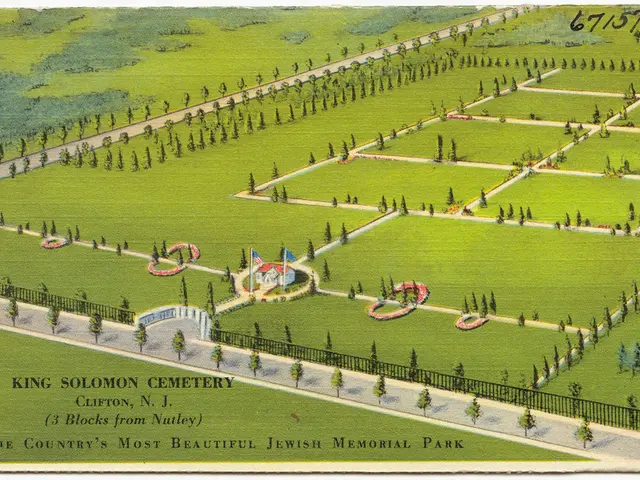15 Clever Watering Techniques Ensuring Healthy Plants While Saving You Money
Having a greener thumb doesn't have to mean a bigger water bill or a more demanding gardening routine. With just a touch of smarts and some clever techniques, you can transform the way you water your plants, saving water, money and giving your green friends the best care around - without too much fuss.
We're diving into eleven simple yet effective watering hacks that will become your secret weapons in the battle against water-wasting. Whether it's for indoor houseplants, container gardens, or your outdoor oasis, these tricks will revolutionize your gardening routine, ensuring that your plants are just as happy as you are.
Let's get started!
Collect Rainwater in Barrels
Rainwater harvesting is one of the most effective ways to cut your water bill and pamper your plants with pure, chemical-free hydration. Set up rain barrels under your downspouts to catch water that would otherwise drain away. A single inch of rain on a 1,000-square-foot roof can yield approximately 600 gallons of free water for your garden. Don't let that golden fluid go to waste!
You can pick up ready-made rain barrels with spigots at your local hardware store or get crafty with food-grade plastic drums or trash cans. Add a screen on the top to filter out debris and install a spigot close to the bottom. Say goodbye to tap water and hello to rainwater's natural nutrients and chlorine-free goodness.
Use Drip Irrigation Systems
Drip irrigation is your gardening secret weapon as it delivers water straight to the roots, eliminating the waste that comes with traditional sprinklers. These systems use 30 to 50% less water than conventional methods, giving your plants constant moisture. Setting up a basic drip system can cost anywhere from $50 to $100 for a small garden, but the water savings typically cover the cost within one season.
Many drip systems are compatible with timers, allowing automatic watering for when you're away. The slow delivery rate also prevents soil erosion and nutrient runoff. Now that's smart gardening!
DIY Self-Watering Planters
Self-watering planters create a water reservoir beneath your plants, allowing them to drink only when needed. These handy contraptions can be made using recycled containers. Take a plastic bottle, cut off the bottom third, invert the top section and place it inside the bottom piece with the soil and plant in the top section.
This ingenious system reduces watering frequency by up to 50%, ensuring your plants are never overwatered or underwatered. Simply refill the reservoir once the soil dries out, saving you precious time and energy.
Water in the Early Morning
Timing is everything when it comes to watering, and watering early in the morning is the key to conserving water. Watering between 5:00 and 9:00 AM gives plants time to absorb moisture before the heat of the day causes evaporation. This simple trick can reduce water waste by up to 30% compared to afternoon watering.
Not only will your plants drink up in peace, but you'll also be reducing the risk of fungal diseases that thrive in prolonged leaf wetness. It's a zero-cost hack that improves plant health while conserving water.
Reuse Cooking Water
Recycling cooking water is a smart way to water your plants while saving some cash. The water used to boil pasta, vegetables, or eggs is packed with nutrients that plants adore. Let the water cool before pouring it over your garden. This nutrient-rich water is a mild fertilizer for your plants, helping them thrive without adding a dime to your water bill.
Just be sure the water doesn't contain salt, oil, or butter that could harm your plants. Potato water is particularly beneficial for flowering plants due to its potassium content. Tea and coffee grounds can also be added to the watering can for an extra nitrogen boost. Your plants will thank you for the nutritious leftovers.
Mulch Everything
Applying a 2 to 3-inch layer of mulch around your plants will dramatically reduce water evaporation, keeping the soil cool and moist. Choose organic materials like wood chips, straw, or shredded leaves. These materials can reduce water needs by up to 50%, saving you precious H2O while keeping weeds at bay.
For container plants, top the soil with decorative stones or recycled wine corks. Not only does mulch keep the soil moist, but it also improves the structure of the soil as it decomposes, allowing it to hold more water naturally.
Install a Rain Sensor for Sprinklers
Installing a rain sensor on your automatic sprinkler system will prevent it from running during rainy days. These small, budget-friendly devices typically cost between $20 and $50 but can reduce outdoor water usage by 15-20% annually.
Connect the rain sensor directly to your irrigation controller, and let it do the heavy lifting for you. Some modern rain sensors can even measure the amount of rainfall and adjust watering schedules accordingly. No more drips when it's raining cats and dogs!
Group Plants by Water Needs
By organizing your garden based on each plant's water requirements, you can ensure that no plant is being deprived of water or drowned in the process. Plant thirsty plants together in one area, and drought-tolerant plants in another. This strategic arrangement saves time and ensures that each plant gets exactly what it needs.
In container gardens, group plants with similar water needs together. This method not only saves time and water, but it also saves you from constantly fussing over each plant. You'll find your water bill dropping while your plants flourish.
Recycle Plastic Bottles as Drip Feeders
Save the earth and your garden! Turn your empty plastic bottles into slow-release drip systems by poking holes in the caps and burying them neck-down next to your plants. Fill the bottles with water, and they'll slowly release moisture directly to the root zone. This clever system can keep your plants watered for several days at a time during dry spells.
Test Soil Moisture Before Watering
Before reaching for the watering can, always test the soil moisture. Stick your finger about 1 inch into the soil. If it feels damp, skip watering that day. This simple test prevents wasted water and protects your plants from root rot and fungal diseases.
Use an inexpensive moisture meter that costs around $10 to $15 for greater accuracy. These devices give precise readings of soil moisture at different depths. They're perfect for those with a green thumb but a high water bill.
Create Watering Wells Around Plants
Build small circular ridges of soil around individual plants to create water-saving basins. These wells, about 3 to 4 inches high and 8 to 12 inches in diameter, prevent runoff and ensure water goes straight to the root zone.
For large plants such as trees and shrubs, create wider wells beyond the drip line where feeder roots are plentiful. Fill the basin completely and let it drain before refilling if necessary. This method can reduce water usage by 25-30% when compared to broadcast watering methods, ensuring your plants get exactly what they need and no more.
Unlocking the Secrets of Water Underground
One unique tactic you may not have heard of is using Ollas, unglazed clay pots buried in your garden. When water fills them, the porous clay slowly releases moisture into the surrounding soil. This method, which originated in Africa and Latin America, can reduce water usage by up to 70%.
Commercial Ollas can be pricey, but sealed terra cotta pots work just as well. Bury them between your plants, leaving the top exposed for easy refilling. The slow seepage created by Ollas creates perfect growing conditions and significantly cuts water consumption.
The Final Swipe: A Water-wise Gardening Revolution
Smart watering practices have the power to transform your gardening routine while saving you valuable time, money, and resources. Opt for these water-saving techniques, and watch as your plants thrive like never before. The best part is, your plants will love you for it. So go ahead and put these watering hacks to work, and say goodbye to the water-guzzling days of old. enjoy your green-thumbed journey to a lush, stylish, and wallet-friendly garden!
Here are two sentences that contain the words 'lifestyle', 'home-and-garden', and 'gardening'.
- By implementing water-saving techniques such as drip irrigation systems and self-watering planters, you can revolutionize your lifestyle and gardening practices in your home-and-garden, promoting a balanced, green-friendly environment without compromising aesthetics.
- Embracing modern home-and-garden trends, such as water-wise gardening, offers a viable solution for creating a lush, sustainable outdoor oasis that enhances both the environment and lifestyle.








